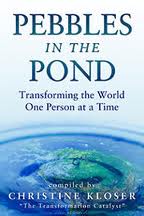I encountered Dorit Sasson during the recent Reinvention Summit 2, in which she was featured in a showcase of selected members of the “tribe.” I’m intrigued by her interesting backstory and approach to her story-based practice. The Q&A, 97th in a series, will run over the next several days.
Bio: Dorit Sasson is the author of Giving Voice to Voiceless: A Five Step  program to Transforming Your Life and Business in Story and a speaker. She uses the power of story to help others create their life and business in story. Download your free MP3, “Story Manifesto: A Guide To Stepping into the Authentic Voice and Vision of Your Story.” When you do, you’ll receive a complimentary subscription to the “Giving Voice to Voiceless” ezine, including a transformational tip of the week.
program to Transforming Your Life and Business in Story and a speaker. She uses the power of story to help others create their life and business in story. Download your free MP3, “Story Manifesto: A Guide To Stepping into the Authentic Voice and Vision of Your Story.” When you do, you’ll receive a complimentary subscription to the “Giving Voice to Voiceless” ezine, including a transformational tip of the week.
 Dorit also authored a chapter in Christine Kloser’s newly released Pebbles in the Pond: Transforming the World One Person at a Time.
Dorit also authored a chapter in Christine Kloser’s newly released Pebbles in the Pond: Transforming the World One Person at a Time.
Q&A with Dorit Sasson, Questions 1 and 2:
Q: How did you initially become involved with story/ storytelling/narrative? What attracted you to this field? What do you love about it?
A: Interestingly, I was initially attracted to the notion of giving voice to “pain stories” as a returning American who had lived almost 20 years in Israel, I struggled finding my voice and my tribe. Later this struggle expanded as part of my business vision of “giving voice to the voiceless.” Expressing pain stories is actually a very powerful part of a storyteller’s journey. I am passionate about the concept that we can allow ourselves to creatively expressing that part of our experience which has been silenced – and often that silent part is the most painful part of our journey.
Q: Your work is very much about helping people use voice as a story  medium. Can you talk a bit about how you see the relationship between voice and story?
medium. Can you talk a bit about how you see the relationship between voice and story?
A: In my work, I help people give voice to their stories by focusing on the pain part of their Stories which can be addressed as the lowest part of one’s story before the breakthroughs began to happen. The “voice” part emerges when people voice their stories.
